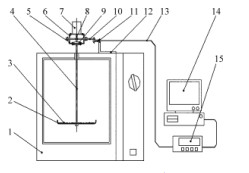Study on microwave drying rule and parameter optimization of fruits and vegetables
The research on microwave drying of fruits and vegetables mainly focuses on the effects of microwave power, time, power to mass ratio, slice thickness and other parameters on the product color, expansion rate, rehydration, micro-structure, power consumption, vitamin C content, starch content and other indicators.
The spinach with 50 g moisture of 9.01 (g moisture/g dry material) was reduced to 0.1 (g moisture/g dry material) by microwave drying equipment. It was found that the energy consumption remained constant when the microwave power was between 350 and 1 000 W, but increased significantly when the microwave power was between 160 W and 90 W. Dry 350 s under power, the product has the best quality and the lowest energy consumption (only 0.12 kW h).

Microwave drying of banana slices was studied, and the water loss characteristics of microwave drying banana slices were revealed. It was found that microwave drying of banana slices could be divided into three stages: acceleration stage, constant speed stage and deceleration stage. With the increase of microwave power, the rate of water loss is obviously increased. Higher pre-launch power and lower post-launch power are conducive to the improvement of appearance quality and quality, that is, the transmission power has a significant impact on the appearance quality. The optimum technological conditions were obtained through optimization.
The pre-launch power is 900 W, the pre-drying time is 2 min, the post-launch power is 397 W and the post-drying time is 11.3 min. Xiong Yongsen conducted microwave drying and pumpkin drying, dehydration and electricity consumption test.
4 indexes, namely appearance quality, rehydration coefficient, unit time precipitation rate and unit power consumption, are presented. The research shows that when the transmitting power is 1 W/g,
The slice thickness is 3.03 mm and the pre drying time is 10.06 min.
When the damping time is 18.24 min, the integrated optimal value of 4 indexes is obtained. Han Qinghua studied the processing method of microwave vacuum drying and puffed apple chips. The relationship between microwave power, pressure, material thickness, initial moisture content of apple slices after pretreatment and their drying characteristics and expansion rate was tested. The optimum technological parameters were obtained. It was found that the microwave power was 12.0 W/g, the pressure was 15 kPa, and the thickness of apple slices was 8.
Conditions for initial moisture content of apple slices after mm and pretreatment were 37.5.
Under the drying time of 4 min, the expansion rate reached 321.
Ran Xu studied the microwave drying law of potato chips. Microwave drying experiments were carried out at different microwave energy levels (2.2-3.6 W/g) and slice thickness (2-6 mm). The material temperature and energy levels (2.2-3.6 W/g) and slice thickness (2-6 mm) during microwave drying were measured. The change of material temperature and moisture content in the process.
It was found that microwave drying of potato chips underwent three stages: preheating, constant temperature and rapid heating. In the preheating stage, the material dehydrated less and lost most of its moisture. The temperature increased with the increase of slice thickness and microwave power/mass ratio. In the rapid heating stage, the drying rate decreased and the temperature increased rapidly. . The drying rate is not affected by the thickness of material slice, but increases with the increase of microwave power / mass ratio. Chen Yan studied the drying law of longan dried by microwave, and found that the whole process of longan microwave drying can be divided into three stages: acceleration, constant speed and deceleration drying. Most of the drying process of longan is in the constant speed stage. In the early stage of drying, longan temperature rises rapidly and tends to be stable after entering the constant speed drying stage.
Cao Xiaohong studied the characteristics of microwave drying of chestnut and the changes of quality after drying. The results showed that most of the water loss process of chestnut was in a constant speed stage. Fresh chestnut fruits could be dried to less than 20 moisture content within 2.7-5 hours, and satisfactory drying quality could be obtained. The water loss characteristics of microwave drying of chestnut mainly manifested in the process of slow drying. The results of scanning electron microscopy showed that microwave drying had an effect on the structure of chestnut tissue; the effect of microwave power on color was not significant, but the effect of slice thickness was significant; the effect of different microwave power on the plate was significant; the effect of microwave power on the structure of chestnut tissue was not significant. The starch content of chestnut had no significant effect, but the starch content of chestnut slices with 0.1 cm thickness was significantly higher than that of chestnut slices with 0.5 cm thickness and whole grains.